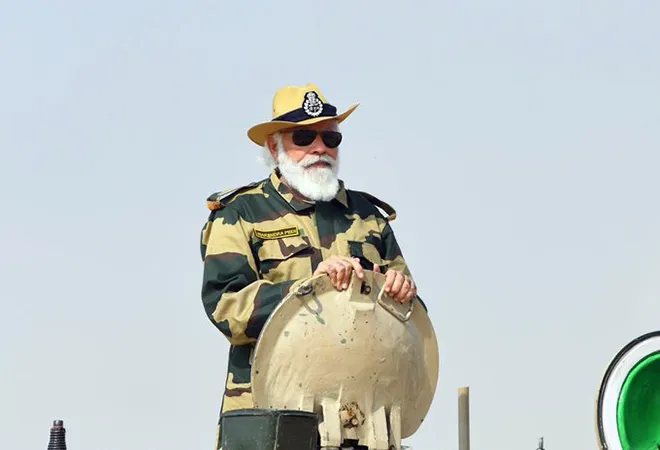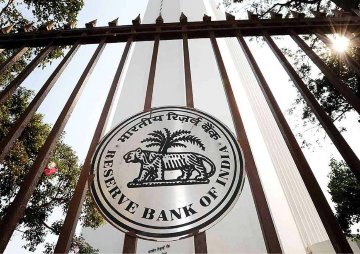Although the foreign policies of major powers do not change dramatically with changes in government, India’s foreign policy vision has been evolving rapidly since the Modi government came to power in May 2014. This evolution is only natural for a nation that is rising in the global power hierarchy. External Affairs Minister S. Jaishankar articulated this vision of Indian foreign policy in a speech he gave last year in November in which he challenged the ‘dogmas of Delhi.’ Jaishankar noted that India was at present standing at the ‘cusp’ of change with ‘more confidence’ and argued that ‘a nation that has the aspiration to become a leading power someday cannot continue with unsettled borders, an unintegrated region and under-exploited opportunities. Above all, it cannot be dogmatic in approaching a visibly changing world order.’
In more ways than one, Jaishankar’s speech has now become the central document through which Indian foreign policy will be assessed in coming years. His conceptualization of various phases of Indian foreign policy and his critique of Indian policymaking has reverberated through the corridors of Indian polity. For a strategic community that continues to tell the world about the consistency in Indian foreign policy and how effective that has been in the pursuit of Indian interests, Jaishankar’s speech stands as a profound corrective. When he says that ‘the balance sheet for India’s foreign policy after seven decades presents a mixed picture,’ he is underlining the fact that consistency can be overrated in foreign policy.
Winning an even bigger mandate in 2019 than his first electoral victory in 2014, Prime Minister Narendra Modi has launched an ambitious agenda in the realm of foreign and national security. His unusual selection of an ex-diplomat, S. Jaishankar, for the powerful position of India’s external affairs minister rather than any party heavyweight shocked many. The appointment reflected Modi’s concern about the global turbulence through which Indian foreign policy must navigate and the need for an experienced hand. A former foreign secretary with several key ambassadorial postings including China under his belt, Jaishankar not only underscores the priority Modi attaches to foreign policy, but also to professionalism rather than orthodoxy.
This need became pertinent in August 2019 when the Modi government took a momentous step in domestic politics with serious foreign policy implications. He suspended Article 370 via Clause 3 that had allowed Jammu and Kashmir to enjoy autonomy. The state of Jammu and Kashmir has been bifurcated into two union territories: Ladakh without a legislature; Jammu and Kashmir with a legislature. Though Modi’s Bharatiya Janata party had long signalled its intention on this front, the move was dramatic both within and outside India.
On the wider foreign policy front, India has been busy courting major powers and reaching out to various parts of the world. New Delhi has engaged with multiple partners and actors in the international system in an attempt to develop strategic relationships that can enhance India’s profile and further its global interests. This is as much applicable to India’s neighboring states in South Asia and the Indian Ocean region as it is to the wider Indo-Pacific and Middle Eastern states. India’s ties with the European nations are also growing at a time when the European Union is willing to enhance its geopolitical footprint.
India’s rising global profile is reshaping New Delhi’s approach to its major partnerships in the changing global order. Although sections of the Indian establishment still want to reinvent non-alignment under ever new guises, New Delhi is showing signs of pursuing strategic autonomy separately from non-alignment under Modi. This separation is overdue in India’s foreign policy, and the country stands to benefit from leveraging partnerships rather than shunning them. Under the Modi government, India is charting new territory in its foreign policy, predicated on the belief that, rather than proclaiming non-alignment as an end in itself, India needs deeper engagement with its friends and partners if it is to develop leverage in its dealings with its adversaries and competitors. India is today well positioned to define its bilateral relationships on its own terms without ideological crutches.
The single most important determinant in India’s foreign policy evolution has been the spectacular rise of China and all its attendant consequences for Indian interests. China’s rise is a much talked about subject these days. It is debated extensively, its causes and consequences dissected in great detail. For some, China is an emerging global superpower, for others it has already arrived. But few can deny the impact that China is having on the international order. China is everywhere these days, challenging the global order at times and yet at others trying to be the guarantor of the global economic order in the age of Donald Trump.
With a population of 1.3 billion and the world’s second largest economy, China seems ready to play an ever more influential role in the global order. Since the global financial crisis of 2008, China’s political leadership has been more vocal than ever about its central role in global affairs. China faces a range of challenges: from its per capita income still being a fraction of that in the developed world to rising inequality, from environmental degradation to an ageing population. Most significantly, it has an archaic political system that wants to achieve economic development in a controlled manner – with the very survivability of the political system dependent on continuing economic growth.
But these challenges are not precluding China’s political leadership from proclaiming an ambitious global agenda. Whereas previous Chinese leaders would prefer to talk of their nation as ‘developing’ or ‘poor,’ Xi Jinping is unabashed in proclaiming China a ‘great power.’ Xi Jinping is now officially the most powerful Chinese leader since Mao Zedong who died more than 40 years ago, after the National People’s Congress voted overwhelmingly in favor of a constitutional amendment which gives Xi the right to remain in office indefinitely. Not that there was any doubt about it but when it finally happened it seemed to be marking another red line in China’s evolution as the pre-eminent global power of our times.
China talks of a multipolar world order but in reality it wants a unipolar Asia. Its assertiveness in staking its maritime territorial claims in recent years might have convinced it that there is no real opposition in the region and beyond. The West is too preoccupied with its own internal challenges to put any serious problems in China’s way. And the regional states are too weak to do anything about Chinese belligerence. ASEAN turned out to be a paper tiger when it came to the crunch. China’s divide and rule policy has fractured any sense of unity in Southeast Asia.
And so as China and India rise in the Indo-Pacific, they are jostling with each other unlike any time in the recent past. The Sino-Indian military standoff in the Himalayas underlines this trend and conveys a new-found geopolitical reality in the region: the future of the Indo-Pacific will remain heavily contested for the foreseeable future.
This commentary originally appeared in ISPI.
The views expressed above belong to the author(s). ORF research and analyses now available on Telegram! Click here to access our curated content — blogs, longforms and interviews.




 PREV
PREV


